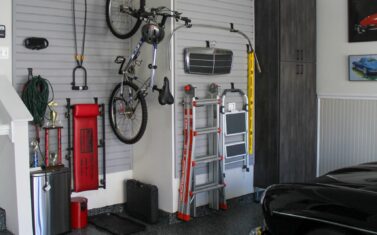
Organizing a Small Apartment: Creative Storage Solutions for DC Locals
4 minute read, by Closet America, on Sep 26, 2019
Organizing a small apartment can be challenging when you’re working around a busy DC-area lifestyle. Custom design experts can help.
When you live in a small DC apartment, you may deal with minimal closet space, especially for built-in closets. Or, perhaps your pantry could use some serious rearranging, but you’re feeling discouraged and wondering what the point would be—after all, won’t it just get messy again after a few months? As Erma Bombeck once wrote, “My theory on housework is, if the item doesn’t multiply, smell, catch on fire or block the refrigerator door, let it be. No one cares. Why should you?”
Of course, most of us have slightly higher standards than that. Most of us would like to live in a nice, clean, well-kept home. But with full-time jobs and kids and the million other responsibilities that make up our daily lives, carving out the time to carefully organize a cramped apartment can seem like a downright Sisyphean task.
We’re here to tell you: It’s not impossible. It just takes a little patience and a little creativity. Knowing where to begin is key—particularly when working with an older reach-in closet. Below are a few simple suggestions and insightful tips from our custom design experts to help you begin (and finish!) organizing a small apartment.
Organizing a Small Apartment Pantry or Closet
Living in DC could mean that you have an average-sized apartment at only 744 square feet—or even less—which can exacerbate the already difficult task of tidying up by providing limited storage space. However, taking things one step at a time can help you organize your small apartment’s reach-in pantry or closet space without excess stress.
-
Clear out your space. Remove non-essentials, toss away expired non-perishables, and get rid of non-BPA-free plastic or other unhealthy or outdated items you’re ready to be rid of. Donate any non-perishable foods and outgrown clothes that you no longer want but can still be of use to others, and toss away those expired or worn out items that have been unnecessarily taking up valuable shelf and drawer space for far too long.
-
Carefully measure your entire storage area. Take note of irregular or immovable features, including the locations of electrical sockets or the angle of a slanted ceiling.
-
Consider repairs, replacements, or a complete redesign. Old shelves may be sagging and in danger of collapse. Rickety racks may need extra support, or to be replaced entirely. Or perhaps you’d simply like to install a better organizational system, one that will help you keep things neat over the long term. Small jobs are easily DIYed, but larger custom work is often best handled with the help of expert closet organizers. This is especially true if you’d like to include handy custom solutions like soft-close drawers, slide-out shelves, or custom-fit racks.

Space-Saving Ideas to Optimize Small Storage
Going one step beyond the basics, the following tips can help you really make the most of even the smallest closet or pantry spaces.
-
Use adjustable shelving and dividers. Add in dividers where you need some clear separation between unlike items, enabling you to further organize these areas.
-
Corner shelving can be a great way to utilize otherwise easily overlooked space.
-
Keep like items together, such as spices and seasonings or tops versus bottoms. Likewise, keep items where they’ll make the most sense—linens go in linen or hall closets, if possible, while everyday clothes are more accessible in a bedroom closet than, say, the pantry.
-
Pay attention not just item type, but item shape—e.g. organizing spices in a drawer using square-based containers so your spices will not roll all over the space.
-
Place vertically long items on a tall, lower-level shelf. In pantries, you may also want to cascade snack bags according to size in a chrome bin.
-
Place taller boxes together. Large boxes with some height to them—like cereal boxes in pantries or board games in closets—are typically best stored on an upper shelf.
-
Incorporate a slender slide-out drawer for non-perishables or small accessories. In pantries, this is ideal for things like rice, beans, and quinoa that often come in plastic bags or small boxes. In closets, this can help keep easily tangled items, like necklaces, bracelets, or earrings, neatly separated.
-
Use your floor space. Chrome bins, baskets, and laundry hampers can be placed at the lowest level of your storage space to hold miscellaneous items that aren’t better stored elsewhere, such as paper towels, miscellaneous snacks, or toys.
It will take some time and a bit of effort, but eventually, your toils will be rewarded with a fully organized small DC pantry and/or closet. Of course, the question then becomes: how do you keep it organized?

Creative, Custom Solutions for Organizing Your Small Apartment
Organizing a small DC custom closet or pantry becomes easier when you have help. Sometimes the support of a custom closet designer is the key to ending your frustrations with your tiny DC apartment’s small closets and cluttered reach-in pantries.
Albert Einstein once said, “Out of clutter, find simplicity.” Working with a local custom closet company can turn an otherwise daunting quest for order into an easy, even fun journey to organizational bliss. With expert help, you’ll be able to create the storage space you want and the solutions you need to keep your apartment tidy—regardless of how much or how little closet or pantry space you’ve got to work with.
When you need support with organizing a small apartment and the custom design of your pantry or storage space, contact us—or, feel free to schedule a free design consultation today.
Lead image: Shutterstock




